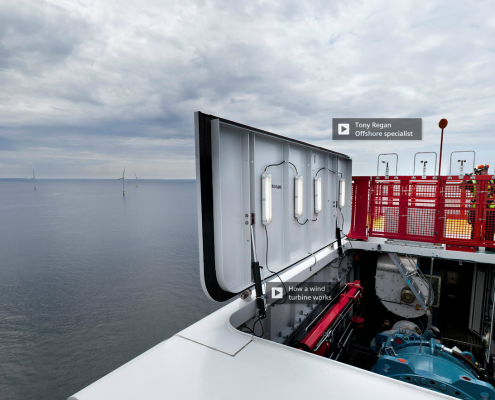Tag Archive for: energy
Tag Archive for: energy
Tag Archive for: energy
Siemens
/0 Comments/in Electrical, Energy, Engineering, Mechanical, Offshore/by EmmaSiemens is a global company with a North East base, who are leading the renewables revolution on and offshore as well as a whole bunch of other cool stuff.
Tag Archive for: energy
15th March – Wind Turbine Engineering
/0 Comments/in North Durham Academy Workshop/by James Brown Well, did your turbine work? Did you manage to get the mass up to the table, or were you left with a knotted bundle of string? Did your turbine purr like a renewable energy generating masterpiece, or did all the blades fall off?
Well, did your turbine work? Did you manage to get the mass up to the table, or were you left with a knotted bundle of string? Did your turbine purr like a renewable energy generating masterpiece, or did all the blades fall off?
It doesn’t matter either way as long as you didn’t give up: figure out what went wrong and keep trying to fix the problem. As a wise old person once said, “An effective wind turbine was never created by someone who gave up at the first sign of difficulty, like for example the axle being bent.” Isn’t amazing how there’s a wise old saying for almost every eventuality!
Check out more about wind turbines (including a a virtual tour of an offshore wind farm which is awesome) and about careers in the renewable energy sector on our wind turbines activity page.
12th Feb – A greener festival
/0 Comments/in Excelsior Academy/by James BrownHello Excelsior! Wow, what a day we’ve just had. I don’t know about you, but it’s made me ready for the summer. I love a good festival: the music, the lights, the food. I’m a bit less keen on the massive expenditure of energy and resources that often goes along with a large music festival. This is why I’m particularly impressed with the Shambala festival which focuses on renewable energy and sustainable resources. They are now powered by 100% renewable energy and have reduced their Carbon footprint dramatically over the last six years. (Find out more information at the bottom of the page.
This music video by Imogen Heap was created using entirely renewable forms of energy. They used a combination of solar hybrid generators and PedGens (fancy exercise bikes – keeps you fit whilst you watch the music!) and were able to power all the music, the stage and the video production equipment. Check out those wired gloves she uses to interact with the music. A perfect example of Science and Art working in perfect harmony.
The activity that we did today is very similar to the sort of research that goes on in the development of wind turbines. You’ve probably seen the large wind turbines either off the coast or up on the hills, but the new breed of wind turbines are designed to work in an urban landscape. Engineers are developing turbines that produce less noise and less vibrations so that we can install them on the tops of buildings and in highly populated areas. Novel designs and structures allow the turbines to be efficient in different wind conditions and produce a consistent level of energy. Vertical axis wind turbines (VAWT) are able to be placed closer to the ground and can operate in less windy areas than traditional wind turbines. You’ll probably see them mostly in urban areas. Next time you’re out in town, take a look up to see if you can see any.
For more information about a regional company who are developing wind turbines check out our Siemens employer case study.
A vertical axis wind turbine at Northumbria University.

9th December: More Rollercoasters
/0 Comments/in Kenton Workshop/by James BrownThis morning, I was back at Kenton for some more K’nex rollercoaster building. There’s a lot that goes into building a rollercoaster, and we only just scratched the surface. For more details, head over to our workshop notes page where you’ll find videos, games, and more information than you can shake a (K’nex) stick at. Now if you’ll excuse me, I have six rollercoasters to dismantle and put back into the correct boxes. Sigh.
Tag Archive for: energy
Wind Turbine Engineering
/0 Comments/in Intermediate/by James BrownRecap and extension materials for our wind turbine workshop.
Roller Coaster Design Workshop
/1 Comment/in Intermediate/by James BrownOur roller coaster workshop looks at the range of specialisms involved in building rides… by building rides.
Rubber Band Cannons
/0 Comments/in Simple/by JonathanAn easy make & do with household scrap and elastic bands, from the Royal Institution’s excellent ExpeRimental series. These are all straightforward activities using household materials, perfect for families to collaborate or compete over on a rainy day.
This film shows you how to turn crisp tubes and a small pop bottle into a surprisingly powerful (and entertainingly inaccurate) foil-firing cannon. Along the way there’s plenty of opportunity to discuss energy transfer and projectile dynamics… or simply to knock things over and cause widespread mayhem.

